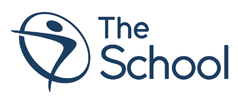

What is Born to Move?
Born to Move (BTM, formerly Active Fascia Release/AFR) has been developed by James Earls, blending his understanding of myofascial and functional movement principles with hands-on manipulation of the soft tissue to create a variety of therapeutic effects.
James trained with Tom Myers, the originator of the Anatomy Trains model, and studied functional movement principles with Gary Gray and David Tiberio of the Gray Institute. Born to Move aims to bring the best of both these models together to give you an immediate and effective treatment tool.
Born to Move combines elements of motor control theory with a neuro-myo-fascial approach to identify, treat and finally re-educate the client’s movement patterns. The blending of guided movement with various soft tissue engagement protocols has created a method that addresses the body as a whole and acknowledges the roles of the body’s various tissues and their interrelationships.
WORKSHOP FORMAT:
Relevant Anatomy: short, intensive and integrated presentations from multiple sources including video of fascial dissections are combined with the palpation of relevant structures. We aim to convey information in an inspiring and understandable fashion.
Postural & Functional Assessment: learn how to see and ‘read’ the intricacy of individual movement patterns.
Born to Move Techniques: each technique is fully laid out for intent and ‘feel’. Plenty of time is dedicated to practice, ensuring you can apply these methods immediately in your clinic.
TIMETABLE:
The lower limbs are covered during the morning, along with essential elements of functional movement such as directions and drivers.
From that solid base, we go onto address the pelvis, torso and shoulder girdle.
Throughout the course, fascial touch skills are explored in movement.
We finish by blending the material together to give a full body treatment, learning to feel the connections through the body in many different positions with a variety of movement ideas.
Once the principles of BTM are learned they can be easily adapted to almost any client or situation. The application of this work can increase your clients’ body awareness and understanding of movement as well as resolving or easing many of their issues.
LEARNING OBJECTIVES:
Understanding and applying essential principles – touch, layering, movement
Applying different movement drivers to create different effects and knowing when to use them
Knowing how to create tissue length versus separation and when to apply each
Combining structural and functional assessments and making sense of how they interact
Building on the principles listed above to develop global and local movement strategies and knowing when to use each based on the combined structural and functional assessments
FURTHER HIGHLIGHTS INCLUDE:
A full repertoire of interventions for the upper body including quadratus lumborum, obliques and intercostals, multifidi and shoulder girdle muscles. Bringing the protocols together to assess and understand the full body connections